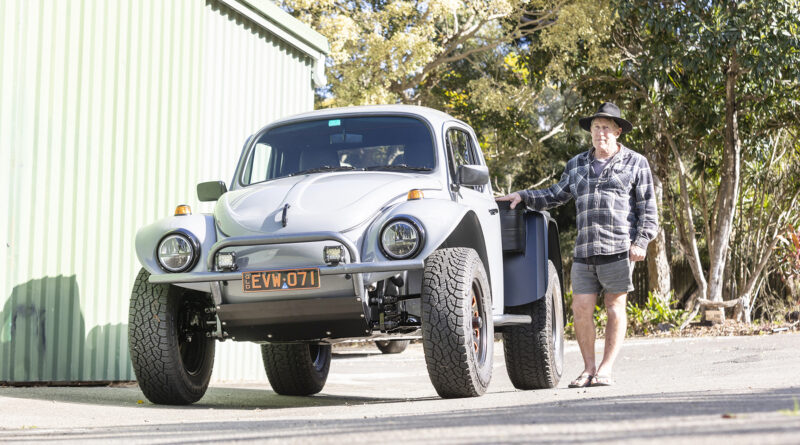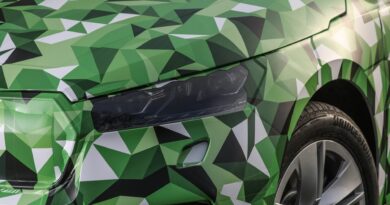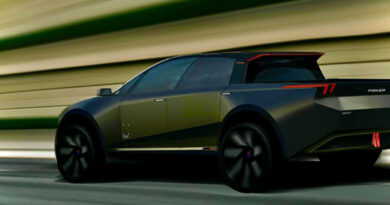Beach baby! 1971 VW Baja Beetle electromod is the ultimate electric toy
Electric cool has a new king.
This next-level electromod 1971 VW Beetle’s been given both the custom Baja and electric conversion treatment, resulting in a high-riding tray-backed one-off destined for sand duties.
Despite its show car looks, owner David Elliott’s about to take this EV Baja to his holiday home on Moreton Island – the world’s third largest sand island – a short ferry ride off Brisbane’s coast.
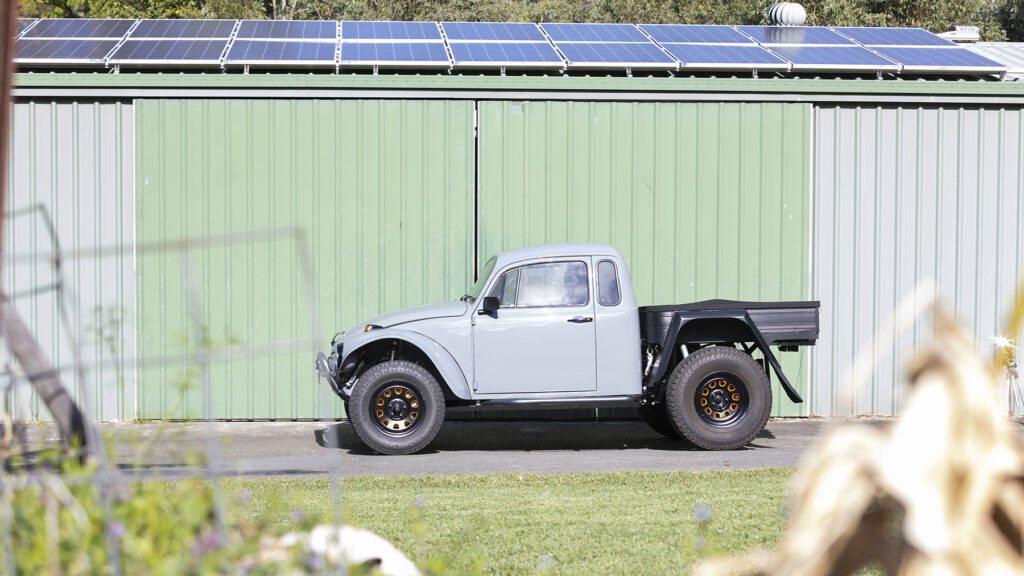
Here it’ll be his practical, zero-emissions plaything, silently bounding along sandy tracks and with ample space in the back to haul the day’s catch.
David greets me at his Brisbane home workshop, where his immaculate Baja’s rolled out for inspection. Dressed in Audi Nardo grey paint, sporting protective bars and shoed with monstrous 305/70×16 Kumho Road Venture off-road rubber, it’s a Queensland beach toy par excellence.
READ MORE:
Converting classics to electric: how to do it and how much does it cost?
Traction EV: Queensland company kicking goals in EV converting classic cars
But unlike the Baja Beetles we’re used to, there’s no exposed air-cooled motor with whopping exhausts attached. Instead, peer under the tray back and there’s a NetGain HyPer 9HV electric motor driving the rear wheels.
Under the seats and on a custom floor pan are seven liquid-cooled Tesla battery modules. Harvested from a wrecked Model X, these offer 43.75kWh and an estimated fit-for-intended-purpose 230km, managed by a Dilithium Design BMS.

As a founding member of the VW Drivers Club of Queensland, David’s built numerous custom specials, including street and beach-bound Volkswagens. He and his wife currently keep two Baja Beetles at their home on the southern end of Moreton Island.
“I started this thought process as our house batteries are fully charged by eight in the morning, and that’s running full solar on the house,” he says.
“So why not build a Baja I can plug in, rather than buying drums of fuel? Most of the time we’re travelling within 10 kilometres, and more than likely just two kilometres. We head out, have a bit of a fish, then plugging it in it’ll only take an hour to charge.”
For now it’s only able to be AC charged – empty to full battery takes seven hours – but the plan is to make it DC charge compatible in due course.
It has regen braking, and single pedal driving’s possible due to the setup.

It should be clear from the images that build quality is exceptional. David’s been a marine trimmer for over 40 years, winning numerous national and international awards, and states his goal “is always perfection.”
Hard to disagree that this is what’s been achieved here.
As his EV Baja will live a coastal existence, his skills and experience in keeping water and salt out of vital areas proves integral. Lanolin grease – with its distinctive smell – features heavily.
David’s done the build himself – including the high voltage work – using parts, advice and final motor programming from Queensland’s Traction EV, the impressive EV-conversion operation we’ve featured in the past.
The floor pan’s 1971 VW Beetle, and the project began by extending the suspension arms to give longer travel. Up front David’s used VW’s Country Buggy spindles, which are a 75mm raise, giving much better articulation with the height.
It features adjustable torsion bars front and rear, and current ground clearance is a massive 300mm. Even so, that’s likely to be raised to 350mm for Moreton Island duties.

David measured up the Tesla batteries to design how they’d fit on the floor, the idea being to keep weight down low to ensure better stability off-road. Highlighting his professionalism, he built an alloy floor including triangulation side impact protection to guard the batteries.
The bodywork’s nothing short of magnificent. The Beetle’s skin was fully stripped ahead of significant custom work, not least adding a fibreglass bonnet (cut in half and widened by 40mm) and crafting the hefty front guards and nose cone by hand.
The rear section – as you may notice – isn’t anything like a normal Beetle’s. Incredibly, this has been taken from the back end of a 1937 Dodge, which had been in David’s garden for 35 years.
“I did some measurements, cut it off and grafted it on,” he says, as if it’s as simple as you or I buttering toast.
It allows a rear dicky seat for David’s dogs to ride on, behind the two front chairs. Underneath the masterfully trimmed rear bench sits high voltage electric gubbins, its bright orange cables beautifully illuminated.
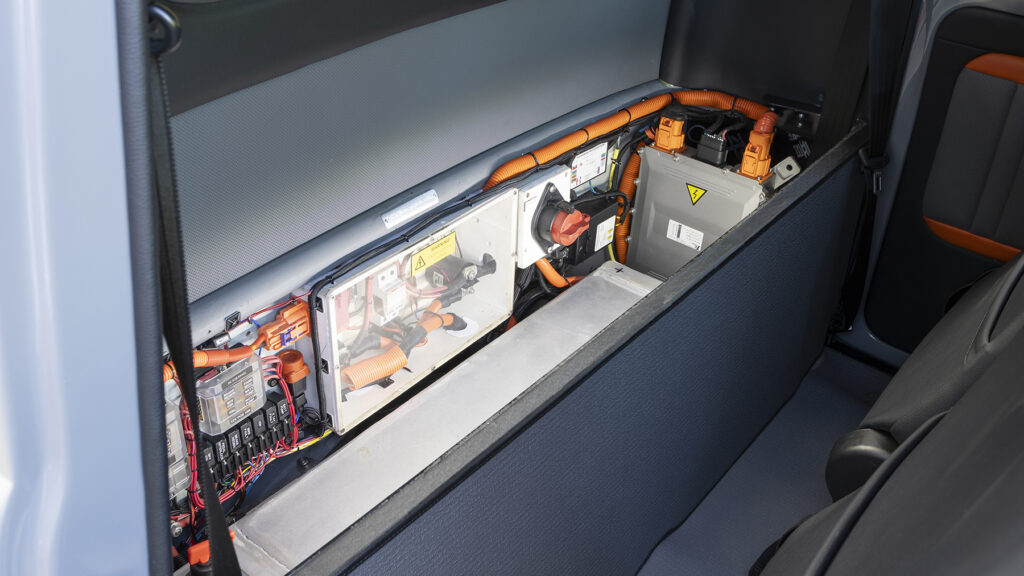
“The side steps and bull bar are 6.7mm alloy, and are the only things powder coated,” says David. “Everything else is 2-pac painted individually, with each part prepared and primed properly. All of the welds have been ground out clean.”
After beach driving, David says all that’s needed is to hose it with rainwater as nothing can catch in any little weld voids, which would bring on the dreaded tin worm.
The rear end features a home fabricated alloy tilt tray, which rises to expose the 170hp (127kW)/230Nm NetGain electric motor. The tray makes the Baja Beetle eminently practical, David saying it’ll carry everything from fish to garden mulch.

Neatly painted wheels bring a dash of colour with orange highlights (to match the orange cables), and are 16×7-inch up front and fatter 16×8-inch for the rear.
In case you wondered, David says he runs tubes in the tyres let down to just 6psi. “The tubes mean you don’t roll them off the rims, and it’s just like a big bit of jelly, but the footprint is more than double like that.” For improved anchoring, there are disc brakes on all four corners.
He’s fitted Toyota Prius electric power steering, with the column neatly leading to a HiLux steering wheel.
It joins a padded dash retaining the classic VW speedo and switches. All remain operational, but a digital GPS speedometer adds a modern improvement, while a little LCD readout reports on electric vitals.
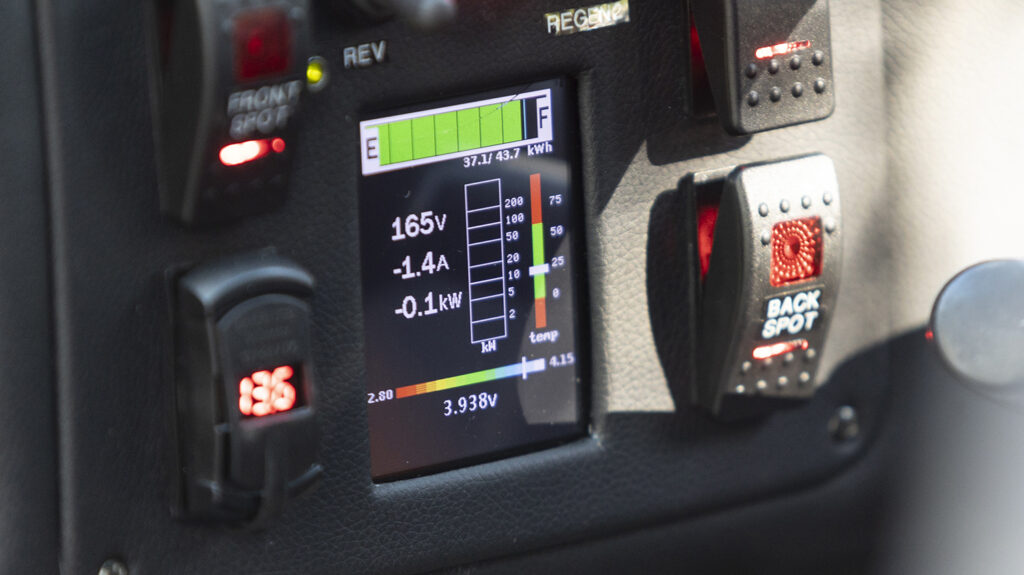
Front seats are modified Suzuki Vitara items, the floor’s hard-wearing marine carpet, and a custom centre console houses a little boom box in lieu of a stereo head unit.
Air conditioning? That’s covered by the original Beetle quarter lights which do a fine job directing air at front occupants when on the move.
The vehicle tips the scales at 1230kg, which is roughly 150kg over the petrol-powered Bajas David’s built. “I’ve over-engineered with thicker components than necessary,” he explains.
You’ll notice the proper licence plates on this EV VW, which landed after securing an engineer’s approval. Which was no simple process.

He had his welding abilities inspected using ultrasound, while a torsional twist test was needed due to the mighty amount of bespoke modifying.
It also required a lane change test, performed by a professional driver in NSW. “The guy did a swerve test and wouldn’t even charge me because he loved driving it that much,” David says.
It’s not hard to see why. It’s surreal seeing this Baja on the move not accompanied by a familiar air-cooled sound.
Instead, it takes off in utter silence, and there’s excellent, instant torque offered.

A manual gearbox remains – it’s a 1976 Beetle four-speed – with a 200mm Stage2 pressure plate and 6-puck solid centre disc.
Fourth and reverse gears have been removed, the latter being resolved by fitting a reverse switch on the dashboard.
“We worked out with the gearing that at 110km/h in second we’re doing 5500 revs, in third about 3000rpm,” he explains.
“It’s excitingly quick,” David reports. “You really only need to use first if you want to do someone at the lights,” he says of the manual gear change.
“Normally I’m just cruising away in second gear, and you can go up to 120km/h+ and pop it into third gear if you need to.”
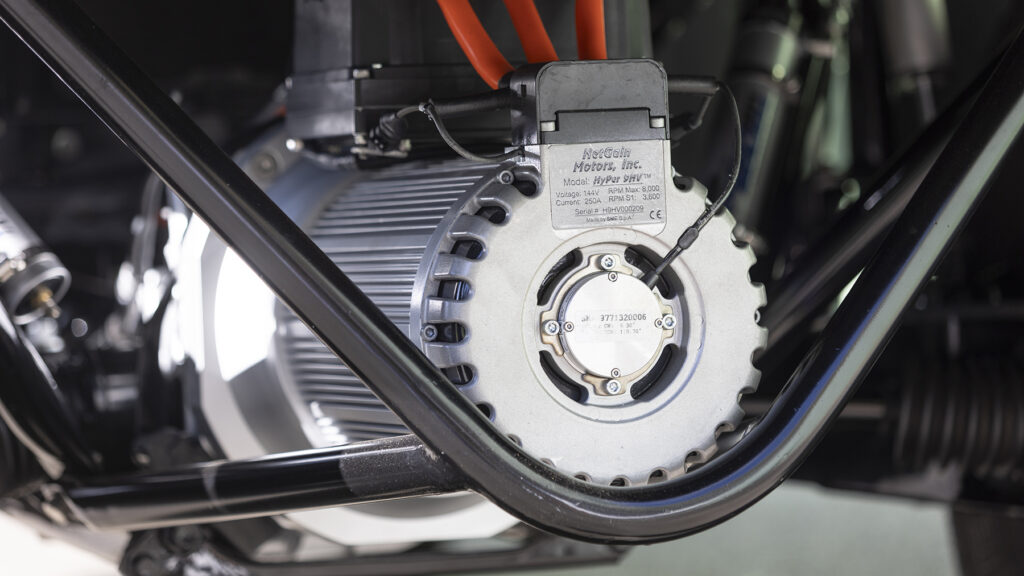
The giant tyres impact the potential range of this EV Baja, as will sand driving. “But even if I only get 100km range after softening the tyres, that will definitely get me around Moreton Island,” he says. “It’s got plenty of range for what it needs to do.”
It appears David’s adapted quickly to everyday EV driving. “I’m taking it everywhere because it’s just so easy and quiet,” he says. “I’ve stopped driving my normal (combustion) VW van. The only thing I’m noticing now is at a set of traffic lights I’m smelling all the other cars’ fumes. I never really noticed that before.”
From beginning to end, the EV Baja project’s taken two and a half years. But David may not be finished. His wife’s taken a shine to EV life, and fancies a street Beetle with electric conversion.
“I believe classic car EV conversions will be a bigger movement in the future,” he says. “I’d advise those interested to be as meticulous as you can. Google has a lot of information, but you must filter out the correct from the false and get multiple opinions.”

And next time you’re visiting Moreton Island, keep a lookout for this incredible Baja.
You’ll have to, because unlike an old air-cooled, you’re not going to hear this one coming.

